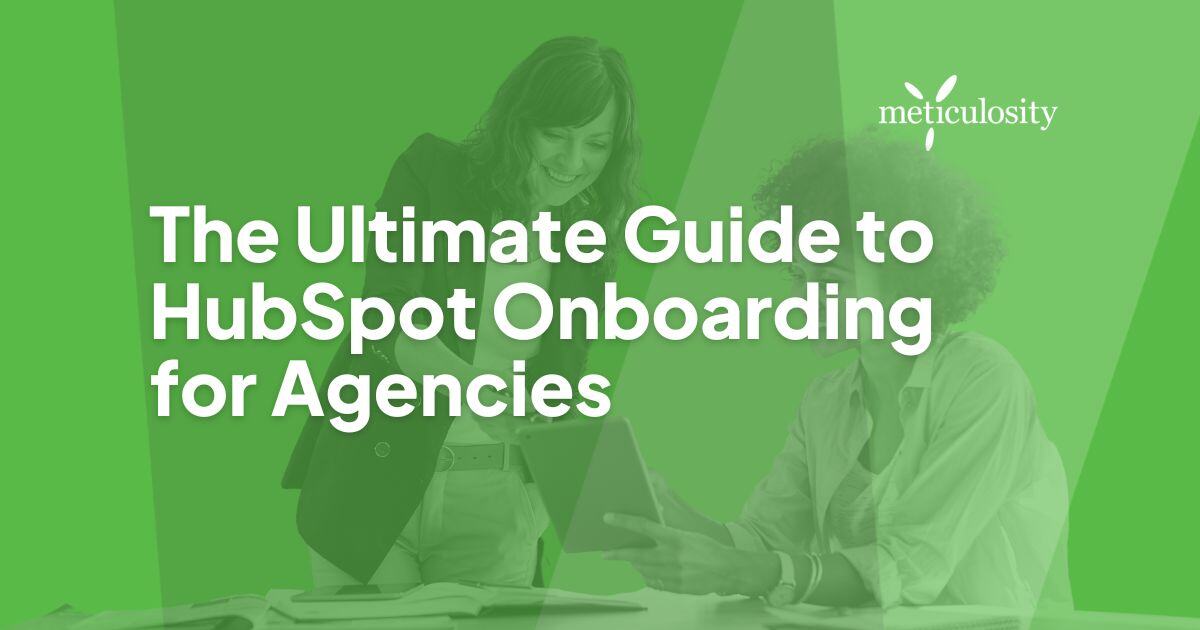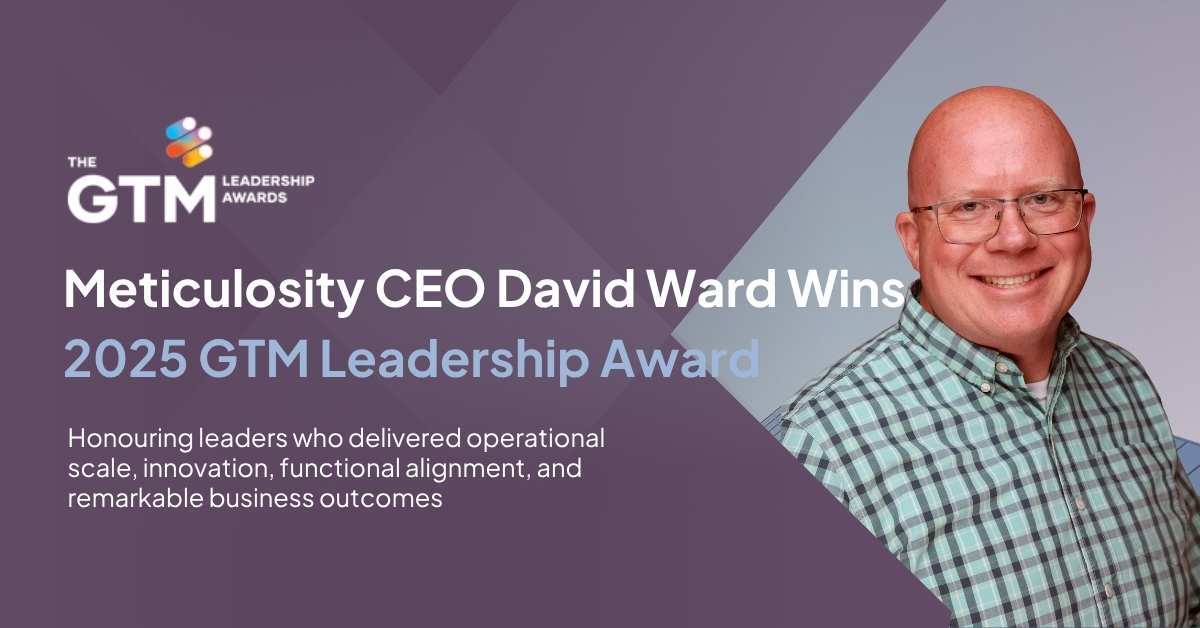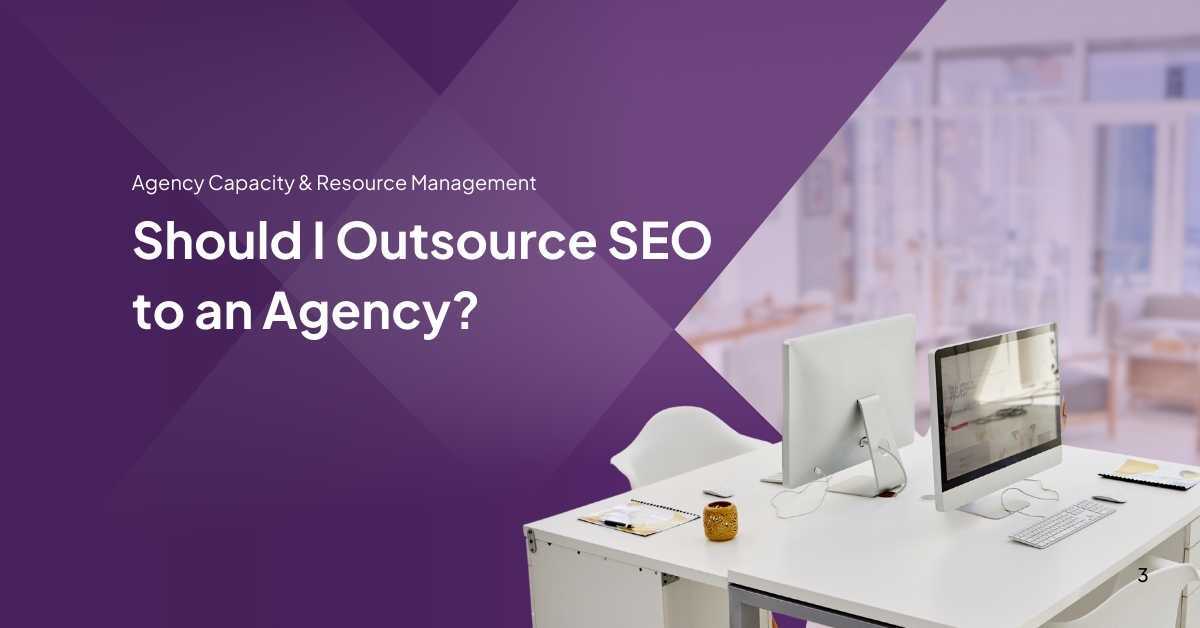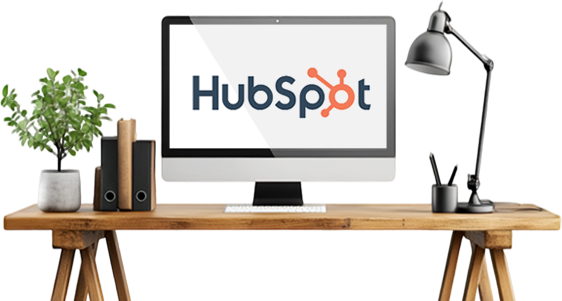Understanding HubSpot Onboarding
HubSpot onboarding is an essential process designed to seamlessly integrate the platform into clients' operations. It goes beyond basic setup, involving comprehensive steps like account configuration, CRM customization, and marketing tool integration. A thorough understanding of these steps is crucial for any Agency HubSpot professional aiming to deliver superior client experiences.
The process starts with a detailed assessment of the client’s needs, followed by the meticulous setup of their HubSpot environment. This includes everything from configuring portals and domains to customizing CRM properties and workflows.
Learn how to refine your approach with Meticulosity’s HubSpot Onboarding for Agencies.
Preparing for Onboarding
The initial phase of the onboarding process demands a deep dive into understanding the client's business. Engage with clients through in-depth conversations to grasp their strategic goals, current challenges, and the desired outcomes they hope to achieve with HubSpot. This step is not just about gathering information; it’s about forming a partnership grounded in mutual understanding and trust. By aligning the onboarding plan with the client's specific objectives, your agency can ensure a customized setup that caters precisely to their needs.
Next, conduct a thorough audit of the client’s existing systems and data. This audit should include an analysis of current CRM systems, marketing tools, and data quality. Identifying gaps and areas for improvement allows for a smoother transition to HubSpot.

Establish clear and open communication channels from the outset. This includes setting up regular check-ins and progress updates to keep the client informed and involved throughout the process. Transparent communication helps manage expectations and ensures everyone is on the same page.
Lastly, develop a comprehensive onboarding plan that outlines each step, timeline, and responsible parties. This structured approach not only keeps the project organized but also builds client confidence in your agency’s expertise and dedication.
HubSpot Onboarding Steps
Step 1: Account Setup
Start by configuring the client's HubSpot portals, domains, and user roles. Establish branding elements like logos and templates to ensure consistent representation.
Step 2: CRM Customization
Import the client’s existing data into HubSpot. Tailor pipelines, properties, and workflows to match their business processes, ensuring the CRM aligns with their operational needs.
Step 3: Marketing Tools Setup
Set up email templates, campaigns, and automation workflows to streamline the client's marketing efforts. Integrate any third-party tools they use for a cohesive digital ecosystem.
Step 4: Training and Enablement
Provide comprehensive resources for client teams. Organize workshops or training sessions to equip them with the skills to fully leverage HubSpot.
Step 5: Performance Tracking
Establish dashboards and analytics tools for performance monitoring. Teach clients how to track key performance indicators (KPIs) effectively to meet their business objectives.
Tips for Effective Onboarding
For a smooth onboarding process, prioritize clear communication and set realistic expectations. Address questions promptly, encourage client feedback, and tackle challenges with a proactive, solution-focused mindset.
Personalize training to align with client goals, offering tailored workshops or one-on-one sessions to boost confidence in using HubSpot. Document decisions and processes for better organization and future reference. These strategies ensure efficient onboarding and stronger client relationships.
Enhancing Onboarding with Tools and Resources
Maximize the onboarding experience by leveraging HubSpot’s tools and resources. Use HubSpot Academy courses for structured, self-paced learning to complement your agency’s hands-on training.
Develop agency-specific checklists and templates to streamline tasks, ensuring efficiency and consistency. Recommend tailored integrations to enhance HubSpot’s capabilities and create a cohesive digital ecosystem. Encourage clients to explore HubSpot’s documentation and community forums for additional support and insights. Build a library of internal resources like tutorials and troubleshooting guides to keep your team and clients informed and empowered throughout the process.
Overcoming Common Onboarding Challenges
Overcoming common onboarding challenges is essential for a smooth client transition. One of the main issues agencies face is resistance to change from client teams. To address this, emphasize the clear benefits and improvements HubSpot will bring to their daily operations. Showcase success stories and provide tangible examples to build confidence and buy-in.
Data migration can also pose significant hurdles. Ensure all data is meticulously prepared and accurately transferred to avoid disruptions. Utilize data mapping techniques to maintain consistency and integrity during the transition.

Complex client needs often require tailored solutions. Break down larger tasks into manageable steps, and provide clear, targeted solutions to address each specific requirement. Offering specialized training and resources can help demystify complicated processes.
Communication is vital. Maintain open channels to promptly address any concerns or issues that arise. Regular updates and progress checks help keep clients informed and reassured throughout the onboarding journey.
Equip your team with the necessary tools and knowledge to anticipate and handle challenges efficiently. Foster a solution-oriented mindset to ensure that any potential roadblocks are quickly identified and resolved. This proactive approach can significantly enhance the overall onboarding experience.
Support After Onboarding
Ongoing support is key to client satisfaction and retention. Schedule regular follow-ups to review progress, resolve issues, and offer additional training, demonstrating your agency’s commitment to client success.
Establish a dedicated, knowledgeable support team familiar with each client’s setup and goals, ensuring quick, reliable assistance. Provide tailored resources like FAQs and tutorials to foster self-sufficiency while offering robust backup support. Collect and analyze client feedback to refine your support process continually.
Enhance engagement through exclusive webinars or workshops, helping clients maximize their HubSpot investment and reinforcing your agency’s value.
Wrapping Up
Successful HubSpot onboarding sets the stage for lasting client satisfaction and growth. By following this guide, agencies can streamline the process, aligning HubSpot’s tools with client needs through clear communication, personalized support, and ongoing follow-ups.
Proactive, tailored solutions build trust and strengthen relationships, positioning your agency as a leader in maximizing HubSpot’s value.
Ready to enhance your onboarding strategy? Get in touch to learn more.
Frequently Asked Questions (FAQ)
1. What does a typical onboarding timeline look like for HubSpot?
While timelines vary based on the complexity of a client’s needs, a standard onboarding process generally takes 4–12 weeks. This includes setup, customization, training, and initial performance reviews.
2. How do I know if my client needs HubSpot onboarding?
Clients benefit from onboarding if they’re new to HubSpot, struggling to optimize their existing setup, or looking to integrate HubSpot tools with other systems. Onboarding ensures they maximize the platform's potential.
3. Can HubSpot onboarding be handled remotely?
Yes, HubSpot onboarding can be conducted entirely remotely. Virtual meetings, screen-sharing tools, and cloud-based resources make it easy to collaborate with clients regardless of location.
4. How does HubSpot onboarding handle scalability for growing businesses?
HubSpot onboarding lays the groundwork for scalability by setting up customizable workflows, pipelines, and integrations. This ensures the platform can adapt as the client's business grows and evolves.
5. What if a client doesn’t have a dedicated marketing or sales team?
No problem! HubSpot onboarding can be tailored to smaller teams or individuals. Focus on simplifying tools, automating workflows, and providing in-depth training to empower them for success.
6. How does onboarding address client-specific compliance needs?
Onboarding can include configuring settings to comply with industry regulations, such as GDPR for data protection or HIPAA for healthcare. These adjustments ensure the platform aligns with compliance requirements.
7. What happens if a client decides to add more HubSpot features later?
The onboarding foundation allows for seamless scaling. Additional features or hubs can be integrated with minimal disruption, as the initial setup is designed to accommodate future growth.
8. How can agencies use HubSpot onboarding to demonstrate value?
By delivering quick wins—like setting up effective email campaigns or automating workflows early in the process—agencies can showcase the platform’s capabilities and build client confidence.
9. What tools can agencies use to simplify onboarding?
Agencies can leverage HubSpot’s built-in tools, such as onboarding checklists, template libraries, and automation features, as well as third-party platforms for data migration or advanced reporting.
10. How does HubSpot onboarding impact long-term client relationships?
Effective onboarding builds trust and ensures clients feel confident in using the platform. This foundation paves the way for long-term partnerships with agencies supporting continued growth and optimization.







